Definition
Autosomal dominant or dominance is a pattern of genetic inheritance that occurs within an autosome (non-sex chromosome). The way we look and function is most commonly the result of dominance of one parental gene over the other. In medical terms, an autosomal dominant disease describes a disorder caused by a single copy of a mutant gene or allele that is carried by one parent and can affect both male and female offspring. A single copy of the mutation from either parent is enough to cause an autosomal dominant disorder.
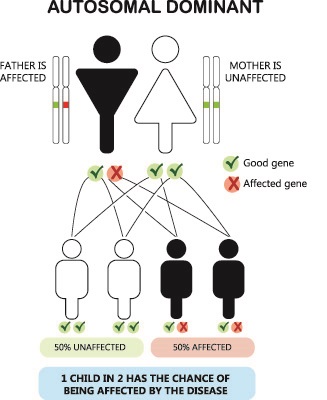
Autosomal Dominant vs Recessive
Autosomal dominant versus autosomal recessive gene inheritance does not have to be a complex topic unless you are a geneticist. Whether a gene is recessive or dominant can be loosely described as the probability of a gene being expressed. When a gene is autosomal, it is only found within the non-sex chromosomes. A mutation can occur anywhere in the millions of alleles of our DNA that are part of the twenty-two autosomal chromosome pairs.
As you probably already know, our chromosomes are paired – we receive one full set of genetic information from our biological father and one full set from our biological mother. What we look like and how we function is the result of this combination, where some sections of the genetic code of one parent take precedence over the same genetic code of the other.
Our genotype – our genetic makeup – is extremely complex. Eye color, for example, is not the result of a single allele but many different ones. It is our dominant genes, usually the result of smaller, dominant alleles, that decide whether our mother’s or father’s genetic information is expressed. Recessive alleles in the presence of dominant alleles do not cause a direct effect but may play a role in future generations.

To make autosomal dominance more straightforward, let us quickly review the difference between a gene, an allele, and a chromosome.
The chromosomes contain the entire genetic plan for an organism composed of shared parent-derived information. We contain exact copies of the DNA of both parents, and our DNA is a mix of these.
A gene is a length of DNA that determines a genetic trait or a specific characteristic, such as the tendency to develop certain types of cancer, for example. Either we are born with these traits, or damage to our DNA can cause certain traits to form over time. Our genotype is responsible for the traits within our DNA. Dominant and recessive genes decide whether these traits are expressed or not. An expressed gene, usually the dominant gene, causes a phenotype – a functional or visual characteristic.
An allele is a very specific part of a gene or chromosome that is found at the same location. There are two alleles for each gene – one from each parent. While a gene may determine eye color, various alleles will determine the exact color. If one of your genes represents the trait of blood type, the alleles will decide which blood type this is. In the case of autosomal dominance we should really talk of dominant alleles because numerous alleles make up a single gene. Even if only one allele in tens of thousands is affected, it has the potential to affect the entire gene. An autosomal dominant (or recessive) disorder is commonly named after an affected gene, but the cause is due to one or more alleles associated with this gene.
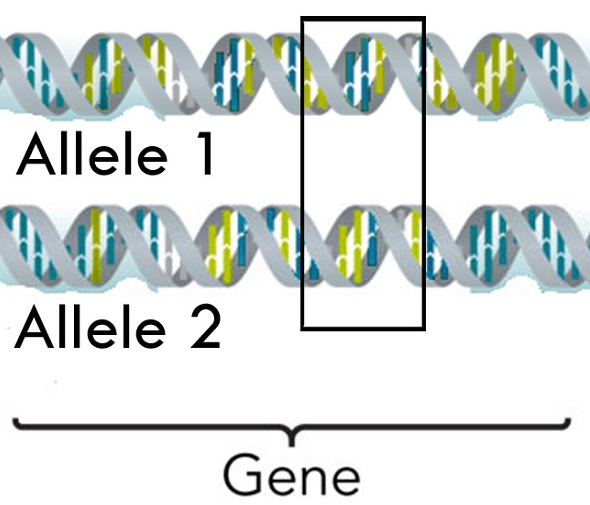
The term dominant tells us that this is a case of one allele winning over another. Only one copy of a gene from one biological parent is necessary to cause a phenotype. A recessive mutation, however, requires both parents to pass it on. A recessive allele cannot win if it must stand against a dominant one. If you have brown hair, your father has brown hair, and your mother has blonde hair, the dominant gene comes from your father. Your DNA contains both brown and blonde hair alleles, but brown is dominant.
If you then decide to have children with a blonde partner whose parents both have blonde hair, that partner does not possess a dominant gene for brown hair. You do, however, possess a recessive blonde gene. Where a child inherits the recessive alleles from both parents, it will have blonde hair. Where it inherits a dominant and recessive allele – or a set of alleles – this child will have brown hair. The exact shade of brown is rarely predictable as so many different alleles affect hair color.
A single recessive gene will not cause an observable characteristic (phenotype), but an adult can be a carrier of this gene. When paired with a same recessive gene from the other parent, two recessive genes will cause the associated phenotype. Where a dominant gene is present, the recessive gene is pushed into the background. In the autosomal dominance example above, blonde hair is recessive and brown hair dominant. In the presence of a dominant brown hair gene, the blonde hair gene is not expressed.

In some cases, an autosomal dominant disorder can be hidden for a time. This meant that, before we knew about genetic fingerprinting, we thought that some diseases were not genetic but caused by the environment. For example, Huntington’s disease is an autosomal dominant progressive brain disorder that affects cognition, emotion, and movement, but only when the gene has reached a certain stage in mutation. A parent can pass on the gene without ever having been diagnosed with the disorder because their Huntington’s gene had not crossed the threshold that initiated the symptoms.
With our current knowledge of genetic fingerprints, it is now possible to see whether someone has the gene well before symptoms appear, but it cannot be predicted whether that person will develop them or not. We now know that Huntington’s is an autosomal dominant disease with a twist. An affected person will have inherited a mutated gene from one affected parent, but this parent might never have shown observable signs of the disease. The parent is not a carrier – is not possible to carry an autosomal dominant gene.
Only when a certain number of mutations have occurred, perhaps partially due to environmental causes, do symptoms start to appear. Our environment can activate a disorder just as much as the presence of a dominant gene. A few of these can are shown in the image.
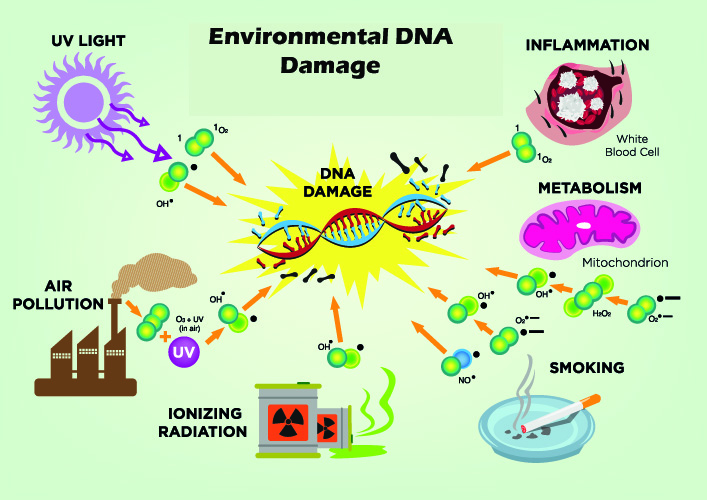
Autosomal Dominance vs Sex-Linked Dominance
Autosomal dominance and sex-linked dominance can help to predict how offspring will develop but concern different types of chromosomes. Human and mammal gender is determined by which sex-chromosome pair (X and Y) is present in a person’s genome. Females have two X chromosomes (XX); males one X and one Y (XY). Sex-chromosomes are also called allosomes.
Offspring gender is decided through the presence of XX or XY chromosomes; there is a 50% chance of presenting with XX or XY phenotypes – girls or boys, respectively. A female cannot carry recessive or dominant Y chromosome genes as a female does not have a Y chromosome; this is not the case in males who have both X and Y chromosomes. Any visual or functional characteristic caused by allosomes is known as a sex-linked genetic trait.
In the diagram below, we can understand how sex-linked inheritance works. In this image, the color red distinguishes an X-linked recessive trait. The carrier female at the top of the diagram has passed her recessive gene to one daughter. This daughter is also a carrier as she has a dominant X chromosome from the father. However, the son has only one X chromosome – from his carrier mother. His genes express the trait, because there is no dominant X gene.
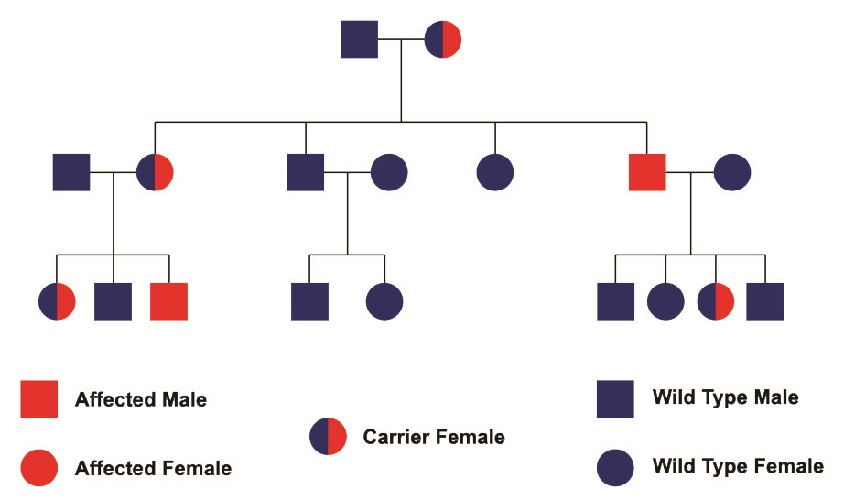
Y-chromosome infertility negatively affects sperm production; this is controlled by the Y chromosome. With recent reproductive technologies, men suffering from low sperm counts or low-quality sperm are now able to father children. This means that inherited infertility is a steadily growing phenomenon that can be passed on to sons. Before, these men would not have been able to have children and would, therefore, be unable to pass this gene on. Daughters cannot inherit the infertility gene as no female has a Y chromosome.
X-linked inheritance affects both sexes. After all, both genders have at least one X chromosome. In X-linked dominance, both men and women can be affected. One example of X-linked inheritance is hemophilia. The Center for Disease Control and Prevention has published an interesting fact sheet all about this sex-linked recessive disorder on its website. As men only have one X chromosome, one mutated copy of the gene is enough to cause the disorder. As women have two X chromosomes, they can be carriers or present with the disorder.
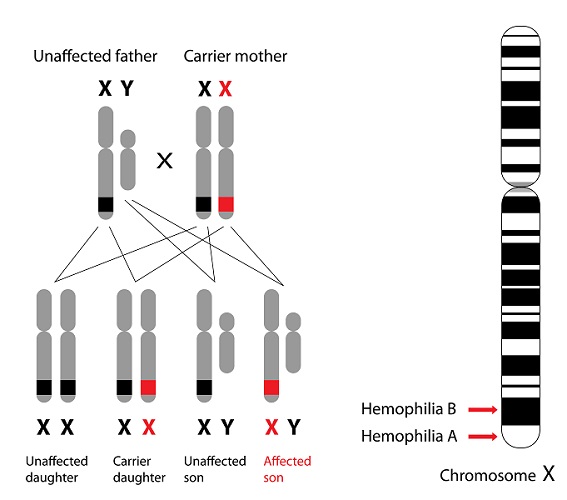
Sex-linked dominant disorders are extremely rare but do occur. An example is Rett syndrome, an X-linked dominant disorder that primarily affects girls.
The difference between autosomal and sex-linked dominance is purely to do with the type of chromosomes involved. Autosomal dominance affects the twenty-two non-sex chromosomes or autosomes. Sex-linked dominance only affects the single sex chromosome or allosome. Dominant and recessive allele combinations control every aspect of the anatomy and physiology except for sex-linked traits. The University of Kansas Medical Center has published a long list of genetic disorders that also shows whether each disease is autosomal, allosomal, recessive, or dominant.
Autosomal Dominant Examples
Autosomal dominant examples can relate to skin, hair, and eye color, the risk of developing certain diseases, and even inherited behaviors associated with neurological traits. While many diagrams show the chances or probabilities of inheriting brown, blue, or green eyes from both parents, eye color is the result of countless alleles and not always predictable. For clearer examples, it is better to concentrate on single mutant alleles as this rules out the influence of other genetic factors.
Chromosome four hosts the huntingtin protein gene (HTT gene) that contains between 10 and 35 repetitions of a specific piece of code known as the CAG trinucleotide repeat. In patients with Huntington’s disease, these repetitions occur at least 40 times. This might be due to inheritance, but it has since been discovered that repeat expansions can change in size in the same or successive generations. Just because you have the HTT gene does not mean that you will develop Huntington’s disease. This particular disease has already be mentioned as being an autosomal dominant disorder with a twist; when researchers discover what triggers increased repeat expansions, they will be able to halt or even cure their associated illnesses. Repeat expansions cause many genetic disorders.
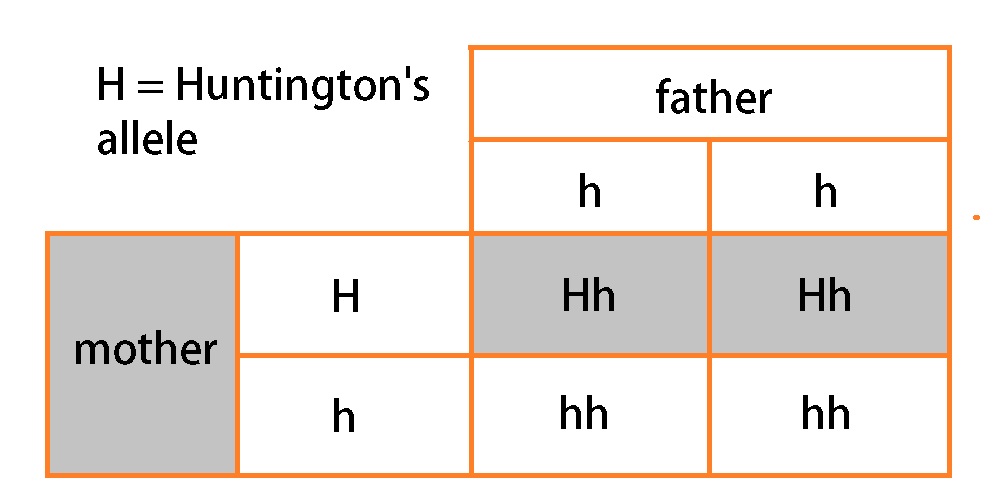
As an autosomal dominant disease, only one parent needs to present with a trait and pass it on to the next generation. In the diagram above, the huntingtin gene of the mother is represented by a capital letter H. No mutation in the HTT gene (hh) is represented by the unshaded squares; the gray-shaded boxes indicate mutation of the HTT gene (Hh).
It may be that the parent with the mutated HTT has less CAG trinucleotide repeats and does not present with the symptoms of Huntington’s, but the dynamic nature of this gene may mean that higher repetitions occur at a later point in life, or during the life of any child or children this parent has.
It is clear in the diagram that half of the offspring of a Hh and hh parent are at risk of the mutated trait (Hh). Diagrams that show inherited traits are often referred to as punnet squares or pedigree charts.
Another popular example in the field of autosomal dominance is polycystic kidney disease, where multiple cysts develop in the kidneys and reduce their ability to filter waste products from the blood.
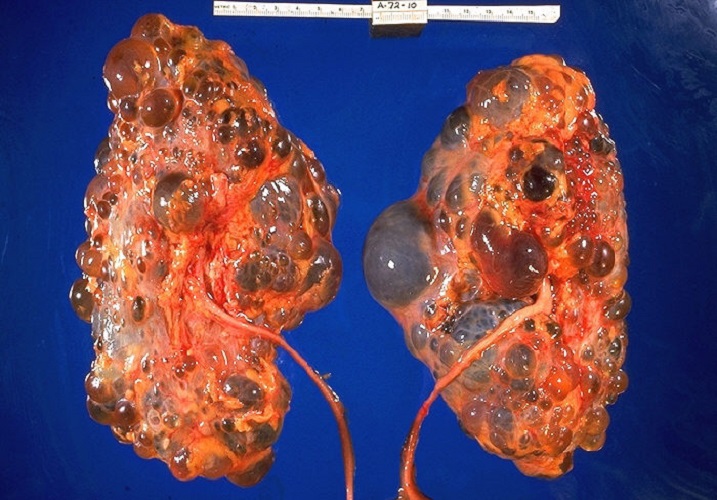
As with Huntington’s disease, autosomal dominant polycystic kidney disease (ADPKD) is the product of a single parent passing on the disorder. In this case, a single mutated copy of the PKD1 or PKD2 gene causes the disease. PKD1 is found on chromosome 16; PDK2 on chromosome 4. A relatively newly discovered gene on chromosome 11 can produce combined polycystic kidney and liver disease. Also as with Huntington’s, some cases of ADPKD are the result of a new mutation. Unlike Huntington’s, it is also possible to have autosomal recessive forms of polycystic kidney disease (ARPKD).
Autosomal Recessive Examples
Autosomal recessive examples include cystic fibrosis and sickle cell anemia. Sickle cell disease is caused by a mutation in the hemoglobin-Beta gene found on chromosome 11; cystic fibrosis is the result of a mutation in the gene that produces a protein known as transmembrane conductance regulator or CFTR.
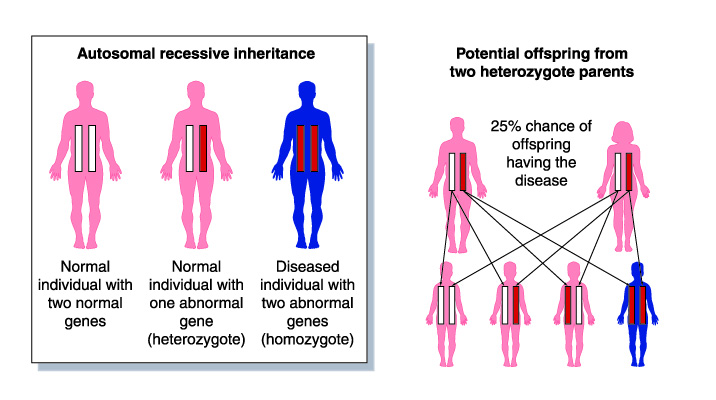
While an autosomal dominant gene means that no parent can only be a carrier, this is not the case in autosomal recessive disorders. One or both parents may be carriers, with the latter of these situations pictured above. Where both parents carry a mutated gene form there is a 25% risk of a child presenting with both mutated genes. In this situation, a dominant gene is absent and the child will present with the recessive phenotype – sickle cell anemia or cystic fibrosis, for example.
If only one parent is a carrier, it is expected that 50% of the offspring are themselves carriers; these offspring will not present with the disease phenotype due to the presence of a dominant non-mutant gene. With this 50% chance of carriers in combination with better medical treatments and reproductive opportunities for affected offspring, the number of people presenting with autosomal recessive phenotypes increases over time.
